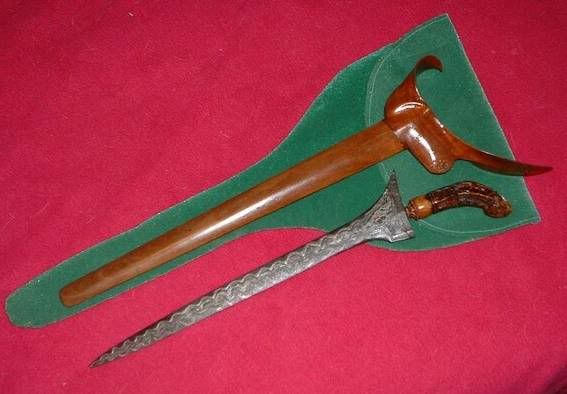
 |
|
|
#28 |
|
Member
Join Date: Mar 2006
Location: Room 101, Glos. UK
Posts: 4,263
|
 this is not a keris, it is an image of a keris p.s. - this is not a kris either. this is an image of a kris.   of course, in classical thaumaturgy the image IS the object, it's the sympathetic magical law of similarity..... Last edited by kronckew; 16th April 2010 at 01:50 PM. |
|
|

|
|
|